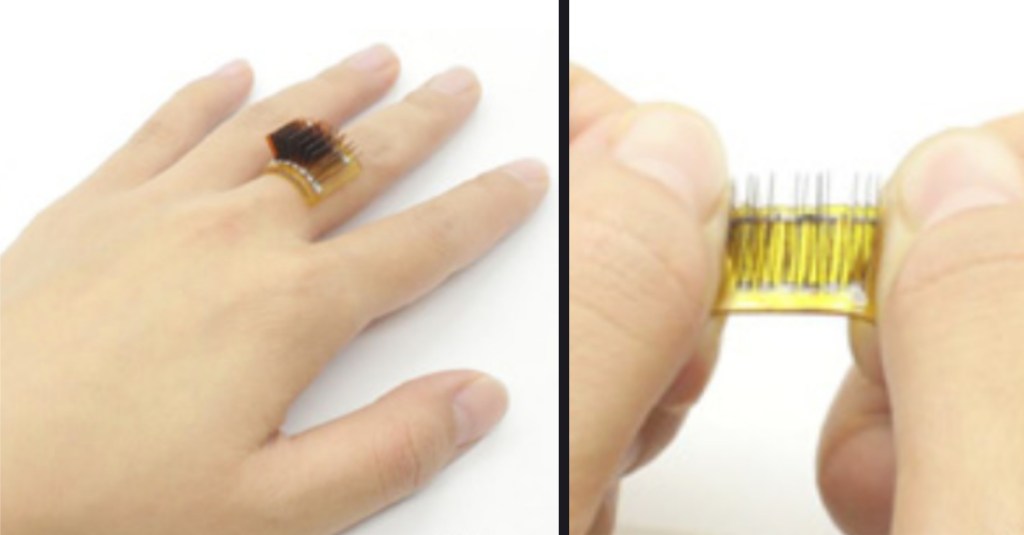Most of us have probably never considered that we might be staring at a decent source of renewable energy in the mirror every single morning.
But scientists are saying it’s possible that we might be able to power things like pacemakers, insulin pumps, and other objects using the body heat we’re already generating on a daily basis.
They think that a small gadget that’s the same size and shape as a typical smartwatch or even a ring, could turn your body’s electricity into a battery.
They’re calling it a thermoelectric generator (TEG), and the scientists at the University of Colorado Boulder think it could be as small as a ring, but as large as a sleeve if a person needed or wanted to generate more power.
Here’s what it would look like as a ring. First, the making of the flexible sheets that would produce the electricity.
Image Credit: Science Magazine
Then the construction of the ring.
Image Credit: Science Magazine
The ring, watch, or sleeve must come into contact with your skin, where the malleable circuitry inside the device converts your body heat into electricity, and then a special material inside the gadget reconfigures itself to keep from breaking as you move.
The TEG resembles your skin, which means you should be able to wear it all the time, in almost every situation, without ruining or harming it at all.
Image Credit: Science Magazine
In the published study, found in Science Advances, the researchers say that not only does the TEG use the warmth of your skin to create energy, the side that faces outward will also soak up and convert solar energy, when possible.
Image Credit: Science Magazine
Jianliang Xiao, an associate professor of mechanical engineering at CU Boulder, released a prepared statement.
“In the future, we want to be able to power your wearable electronics without having to include a battery.
Whenever you use a battery, you’re depleting that battery and will, eventually, need to replace it.
The nice thing about our thermoelectric device is that you can wear it, and it provides you with constant power.”
The technology uses your body’s natural conduction process, which maintains a constant temperature of 98.6 degrees F by walking a tightrope of heat gain and heat loss – but at a cost.
We lose around 75% of the energy we produce in the form of heat.
Image Credit: Science Magazine
The TEGs use that difference in the temperature of our bodies versus the surrounding air, to turn energy into power. They capture, in essence, the heat that’s coming off your skin before it disappears.
They can generate around one volt of energy for every square centimeter of skin space, which is less than a typical battery. That said, the larger the device, the more power, and researchers believe we would be able to do away with traditional batteries in our smartwatches, phones, fitness trackers, insulin pumps, pacemakers, you name it.
This is exciting not only for the medical and convenience benefits, but also in the fact that it’s cleaner, doesn’t use rare Earth metals, and doesn’t require corrosive materials – and it might not be that long until they’re available everywhere, according to Xiao.
“We’re trying to make our devices as cheap and reliable as possible, while also having as close to zero impact on the environment as possible.”
We’ll see how this all plays out…
